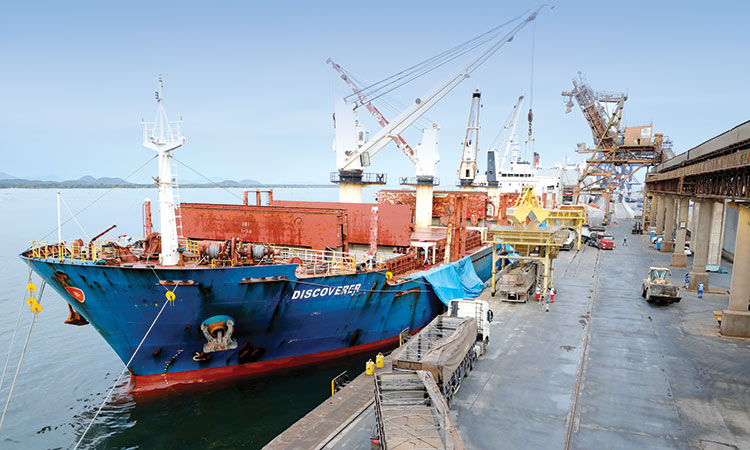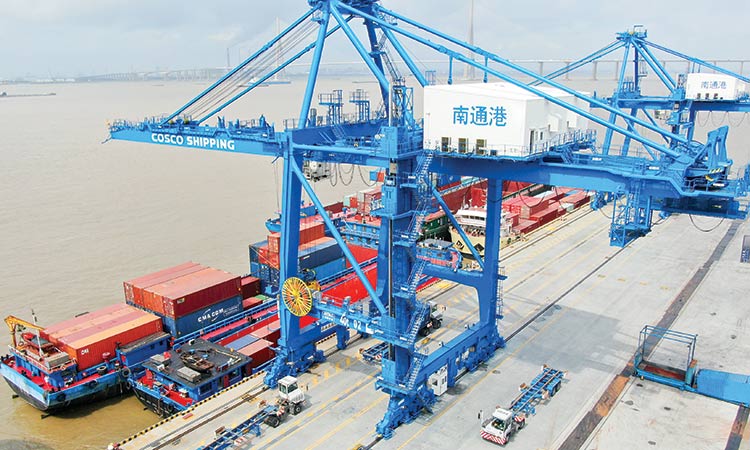China’s new global land-sea trade corridor records $8.9b in TEUs

The photo has been used for illustrative purposes.
According to the People’s Daily, the transportation route saw an increase of 7 percent year-on-year in 2023, with 615,200 twenty-foot equivalent units (TEUs) transported, surpassing a total value of 64.32 billion yuan ($8.9 billion), marking a 16 percent increase compared to the preceding year. Moreover, the International Land-Sea Trade Corridor (ILSTC) has expanded its reach to 490 ports across 120 countries and regions, facilitating the transportation of over 1,100 types of goods.
The bustling activities at the Guoyuan Port in Liangjiang New Area, southwest China’s Chongqing municipality, mirror the ILSTC’s rapid development as a vital logistics pathway. As of December 2023, 42 national logistics hubs have been established in provinces, municipalities, and autonomous regions along the corridor, with 11 new national logistics hubs set up in 2023 to reinforce the role of important logistics nodes.
Institutional innovation has played a significant role in improving the ILSTC’s comprehensive service capability. Customs clearance continues to be facilitated, with the overall customs clearance time for import and export at ports of Guangxi reduced by 73.2 percent and 98.01 percent, respectively, compared to 2017.
The application of digital documents is also increasing, with the pilot “one-document coverage mechanism” expanding its coverage to Southeast Asian countries such as Singapore, Vietnam, and Laos. The “one-container coverage mechanism” has been implemented extensively, leading to a cost reduction of around 1,000 yuan per container.
Furthermore, the building of information exchange platforms is accelerating, with over 800,000 pieces of data on container and vessel movements shared with Singapore’s port operator PSA, extending information about international supply chains from China to the world.
The ILSTC’s rapid development and ongoing innovations in logistics and customs procedures are set to further enhance China’s connectivity with the global market and contribute to the country’s economic growth.
The Small and Medium Enterprises Development Index (SMEDI), which was calculated based on a survey of 3,000 SMEs, registered at 89.3 in the first quarter of 2024, up 0.2 percentage points than that of the fourth quarter last year, according to the results released by the China Association of Small and Medium Enterprises (CASME) on Tuesday.
China Central Television quoted Ma Bin, executive vice-president of the association, as saying that the index’s improvement has been supported by the continuous efforts of small and medium enterprises to resume their production activities after the Spring Festival, along with increased supportive policies rolled out by governments.
“The operating rate of enterprises rebounded significantly after the Spring Festival. The number of enterprises with full operation at the end of March increased by 15 percentage points month on month. Second, after the ‘two sessions’, a series of policy combinations to stabilise growth and benefit people’s livelihood have been launched, boosting corporate confidence,” said Ma.
In the first quarter, all sub-indexes of the China SME Development Index increased, with the market index and funding index both rising by 0.3 points, marking the largest increase.These indicated that the market expectations and financing conditions of SMEs have improved significantly.
The survey also showed that among the eight major industries of the national economy, the domestic order index of five industries, the input index of five industries, and the sales price index of four industries all increased.
Meanwhile, Brand Finance’s “Global Soft Power Index 2024” reveals that China has become the fastest-growing nation brand, ranking third behind the United States and the United Kingdom. China’s significant improvement in the pillars of “Business and Trade” and “Education and Science” has contributed to its rise in the index.
According to Global Times, various elements including the changing perception of “Made in China” goods, the Belt and Road Initiative, as well as advancements in technology and innovation, have contributed to the bolstering of China’s soft power. Additionally, collaborative efforts between China and nations across the globe have been instrumental in fostering a more favourable perception of China’s soft power.
Analysts attribute China’s success to its embrace of openness and inclusiveness, focus on technological innovation, and adherence to the principles of peaceful development and mutual benefit.







